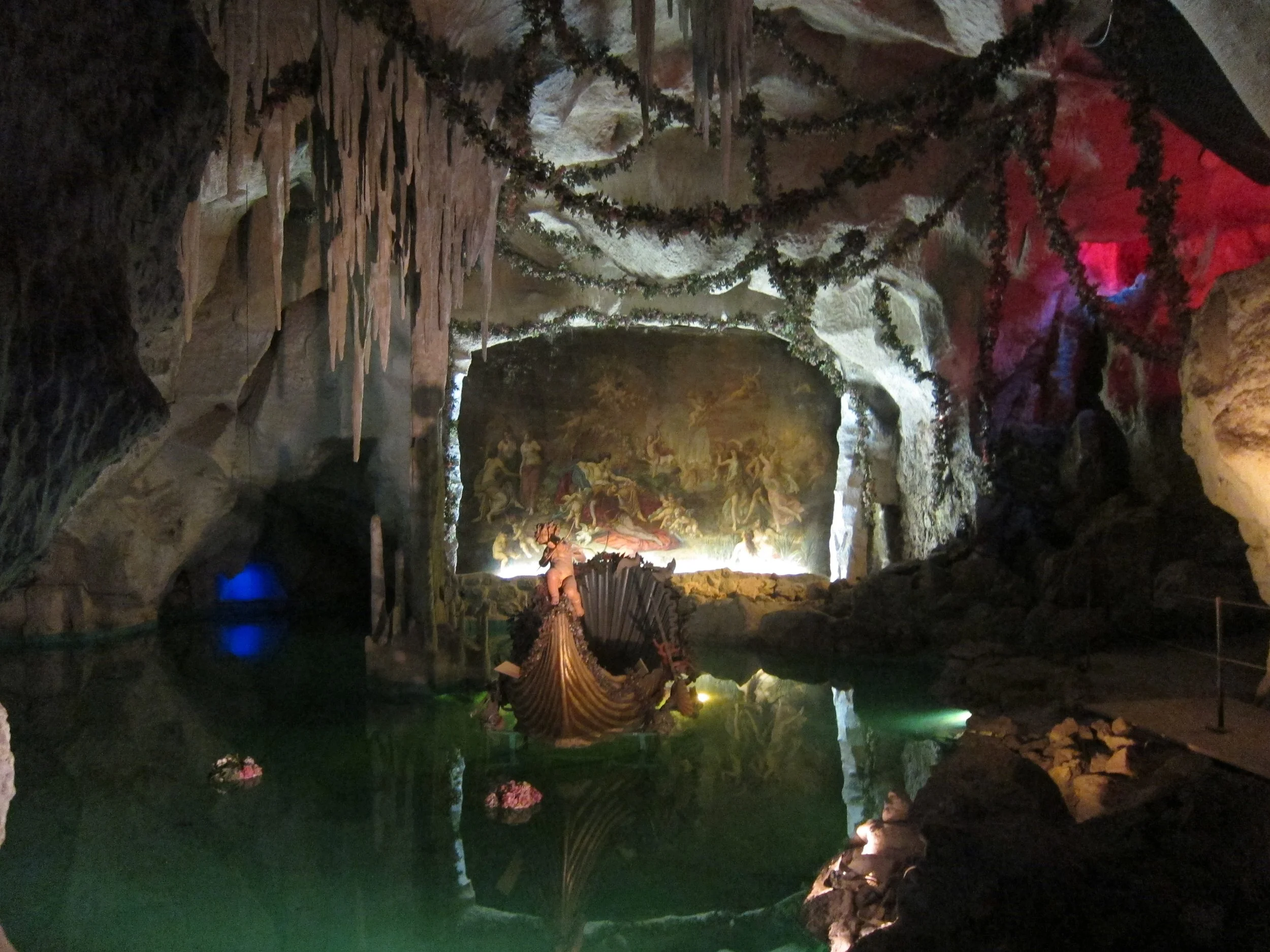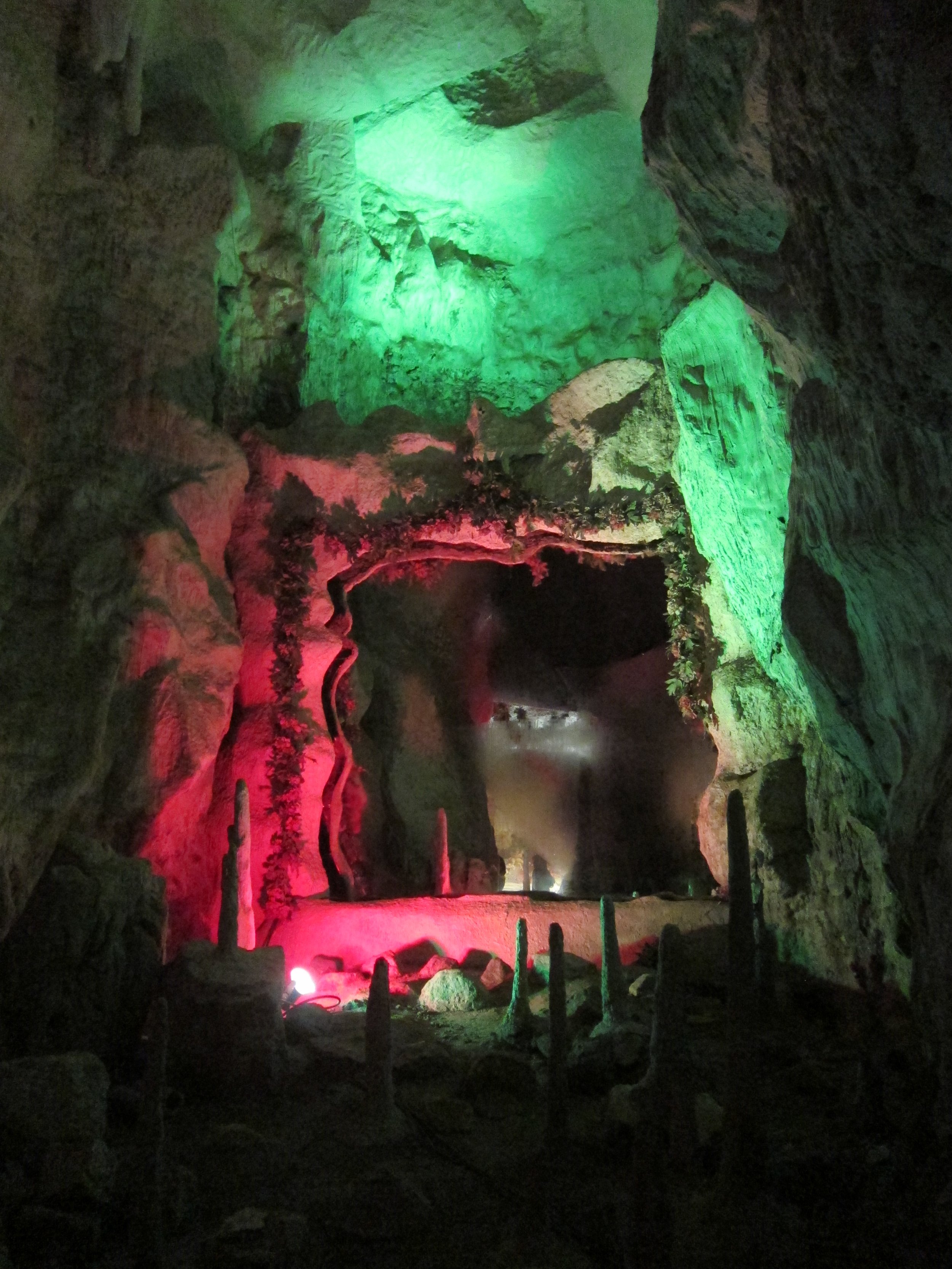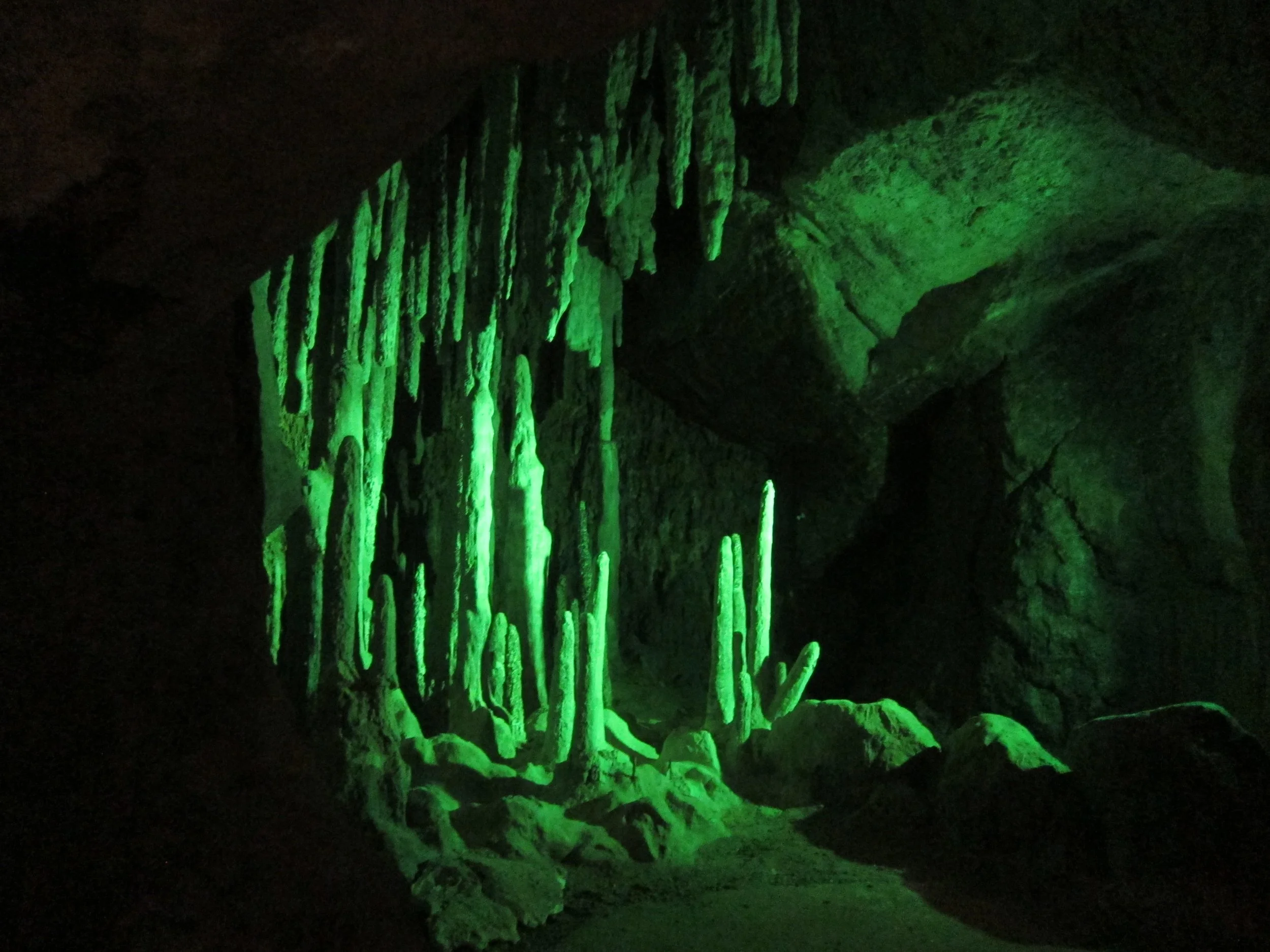Projected Fairy Tales: The Life of Ludwig II as Revealed on Film in the Age of Mechanical Reproduction
Guest post: Ken Hollings
Fig. 1: Neuschwanstein undergoing restoration. Photo by Ken Hollings (@lahollings).
Das Rheingold
Once upon a time, everything used to happen in the dark. Shadows moved, vaguely precise and yet permanently elusive. People watched, mesmerised by what they saw, as if trapped in a fairy tale. And like many a fairy tale, this one contained both an unhappy king and a riddle. In fact, the king and the riddle were one and the same thing. Ludwig II ascended to the Bavarian throne at the age of nineteen in 1864, twelve years before Thomas Edison invented the phonograph. He died, having been deposed from that same throne, in 1886: nine years before the first public screening of motion pictures ever took place. The riddle consequently presents itself. How can a shy reclusive presence like Ludwig II, consumed by a belief in the beauty of the past, leave such an indelible impression upon a medium that had to wait until his death before coming into being? What follows is not an introduction to the unhappy life of an actual king, but to the versions of that life committed to film at a time when cinema was fast becoming the dominant medium of the twentieth century.
With every riddle comes a surprise. What we have at the start of this story is an unhappy king who grew up on camera. An official court photographer, Joseph Albert, documented all of the key moments in Ludwig II’s life from childhood to his last days. Albert even devised a number of innovative photomechanical techniques that helped turn those moments into endless postcard reproductions. The photographer died just six weeks after his majesty. For all his passion for Baroque and Rococo art and decoration, Ludwig II was relatively comfortable with the concept of mass-produced photographic images. The French poet Paul Verlaine may have declared him to be the nineteenth century’s ‘one true king’, surrounded by the radiance and splendour of a historicist past;[1] but that ‘one true king’ was a modernist to his core, as susceptible to the changing forces shaping the twentieth century as Walter Benjamin ever would be. ‘My inner world is as sensitive as a photographic plate’, the unhappy king confessed, ‘even the slightest impression is indelibly inscribed there’.[2]
Ludwig II showed great interest in steamships and trains, airships and submarines, flying thrones and death rays. Above all, he became fascinated by the mechanics of illusion. There was, for example, the ‘Tischlein-deck’-dich’ or ‘Wishing Table’ installed in two of his private dining rooms. This could be raised and lowered through the floor using pulleys, so that his meals might appear as if by magic, allowing no servant to intrude upon his solitude. Prominently featured in movies about Ludwig’s life, the table was inspired by a Grimms’ fairytale.[3]
‘Here is the difference between the old fantastic fairytale and its realization in the nineteenth century’, wrote Crown Prince Rudolf of Austria, whose mother, the Empress Elisabeth, was Ludwig II’s cousin and confident. ‘The magic light streaming from the enchanted castle could once be seen by only one individual whom a fairy princess rewarded with her favors. But what one man creates out of the soil of the facts today does not belong to him alone, it becomes the property of all mankind. The fairytale is an aristocratic dream. Its realization through research and invention is democratic reality…’.[4]
Fig. 2: Neuschwanstein courtyard. Photo by Ken Hollings (@lahollings).
Published anonymously three years before Ludwig’s death, in an editorial for the Wiener Tagblat, Rudolf’s fairy tale is a restatement of the same riddle. Ludwig was one of the first in Bavaria to use telephones, batteries and electric lights in pursuit of his fairy-tale existence. Glimpsed so sharply at the end of the nineteenth century, the absolute modernity of beauty, as opposed to its antiquity, posed a question that only cinema could answer. It was a medium that shed new light upon the complex sensibility of an unhappy king, caught between aristocratic dream and democratic reality.
Die Walküre
It’s the gift of the twenty-first century that we are able to watch feature-length movies that were made over a hundred years ago. As a result, some of the earliest depictions of Ludwig II’s life are historically nearer to his death than those films are to us. Take, for example, The Silence at Starnberg Lake, a silent ‘Konigsdrama in six Acts’ first released in 1920, which opens with newsreel footage from 1912 showing the funeral of Prince Regent Luitpold. This solemn procession passing through flickering streets draped with black flags is used to represent the burial of Ludwig’s father, Maximilian II, in 1864. By a grim historical irony, it was Luitpold who ruled in place of Ludwig and his younger brother Otto, after both were declared too mentally unstable to occupy the throne. Meanwhile, in a rented room somewhere in Stuttgart, Richard Wagner reads about the idealistic King Ludwig II and his love of the arts. Wagner dreams of obtaining his help in creating the art of the future. He is visited by debt collectors instead; and, although the great composer gets down on his knees to them, they take away his piano along with the rest of his furniture. The structure of The Silence at Starnberg Lake is only an approximation of narrative. It’s amusing to see Wagner, a composer so closely associated with the musical intensity of inner experience, appearing in a silent movie. The story exists on an entirely different level, the movie having been released on a double bill with an early American movie adaptation of Edgar Rice Burroughs’ Tarzan of the Apes (1912): ‘The Wonder Story of the Age’.[5]
Historical scenes deprived of all interior life are played out on cheap sets. Performances are mere caricatures of human behaviour. Motivations are smoothed over and rationalised. Ludwig’s emissaries invite Wagner to Munich, while Wagner kisses a photograph of the unhappy king and clutches it to his breast. The players gesture with their hands and roll their eyes, heavily rimmed with kohl, towards heaven. This is more like filmed theatre than cinema. The numbered Act divisions suggest as much. ‘Let the magic of art transport you to Valhalla’, Wagner tells the unhappy king after tripping over one of the royal palace rugs. ‘Ludwig’s empire of beauty begins’, an intertitle sternly decries.
Fig. 3: The Venus Grotto, Neuschwanstein. Photo by Ken Hollings (@lahollings).
Another intertitle moves the story forward: ‘Far removed from the happenings of his great era, Ludwig pursues his latest dream: to erect splendid structures’. However, the budgetary restrictions of a cheap popular medium, plus the limited access afforded to movie cameras by the keepers of Ludwig’s castles, mean that the ornate aesthetic excesses of ‘der kitsch konig’ are largely absent from this early silent production. The fairy-tale vistas of Neuschwanstein and the Rococo confections of Linderhof appear only in postcard reproductions, while Ludwig is glimpsed briefly outside Herrenchiemsee, his tribute to the palace at Versailles, and in its vast Hall of Mirrors. ‘What do you have against my structures? They are monuments to Bavarian art’, Ludwig protests, greeting his Minister of Finance with more eye rolling. ‘That they are, Majesty’, comes the reply, ‘but there is no money left’. Instead, the audience has to make do with stone steps, columns and doorways cut together from a series of nondescript buildings presented as a composite of Ludwig’s castles.
To the extent that The Silence of Starnberg Lake is filmed theatre, many of the scenes are staged on outdoor sets to maximise the daylight. The shadows of branches nod over painted canvas backdrops standing in for sumptuous palace interiors. A pale moth flutters across Ludwig’s furnished apartment while he smokes a cigarette, the unhappy king’s ornate gilded world reduced to a collection of cheap antique daubs. A flimsy cardboard door swings open at the lightest touch. The poverty of these effects has the charm of cheap makeup applied to a fading actor – you can see what they were aiming for. Meanwhile, the movie camera reminds the viewer of its presence. To illustrate Ludwig’s unhappiness at being gazed upon by the public, newsreel of cheering crowds is cut into shots of the king peering through a glass double door behind an arrangement of palm fronds. The fake interior confronted by the looped masses outside suggests a striking lack of continuity between aristocratic dream and democratic reality. Crown Prince Rudolf’s mother, the Empress Elisabeth, is clearly made uncomfortable by the camera. She approaches it then stops and smiles as if about to address somebody. She never knows where to direct her eyes.
Fig. 4: The Venus Grotto, Neuschwanstein. Photo by Ken Hollings (@lahollings).
Taking the side of eyewitnesses and doctors, the movie camera exerts its greatest power through a literal depiction of Ludwig’s supposed madness. Trick edits and jump cuts show him socialising with the kings and queens of France outside Herrenchiemsee, being confronted by a boa constrictor on some stone steps and attacking himself with a sword. Things suddenly appear and disappear. Ludwig’s unexplained death by drowning at Starnberg Lake is foreshadowed by the appearance of a wraithlike ‘Woman in White’ in Munich, while curious passersby stand to one side of the screen watching the ghostly proceedings.
Siegfried
Ten years on, and the story hasn’t changed much. The silent version of Ludwig’s life released in 1930 simply starts nearer its end. The unhappy king is getting older and heavier, his absolutism as a monarch more in evidence. A Universal picture produced in Germany by Carl Laemmle, Ludwig II, King of Bavaria (1930) claims to be ‘based purely on historical fact’, which is never a good sign. The Bavarian State Ministry attempted to ban the film, calling it ‘a gross infraction of public decorum…showing the life of a madman in all the phases of his madness, expatiated throughout ten reels’.[6] In the title role is Wilhelm Dieterle, who also directs the movie. Soon Dieterle will relocate to Hollywood where he directs the film version of Max Reinhardt’s Midsummer Night’s Dream (1935) and The Hunchback of Notre Dame (1939) with Charles Laughton.
What also remains unchanged is the atrophying convention of inserting Act numbers to break the narrative up into ten parts. This imposition seems quite arbitrary by 1930, serving no useful dramatic purpose except to invoke memories of the theatre at the precise moment when silent movies are being replaced by talking ones. The intertitles take over the screen. ‘But people don’t understand his lofty ideals, so he flees into the solitude of his mountains’, one observes as Ludwig withdraws from court politics to seek refuge in his ‘empire of beauty’. This time exterior and interior scenes have been filmed at the real Neuschwanstein and Linderhof. Murals and gilded decorations shimmer and glisten in the background.
The movie camera shapes Ludwig’s destiny in its own way. Early in the movie, Ludwig encounters Doctor Gudden while visiting his brother Otto in the asylum. It is Gudden’s diagnosis that has Ludwig removed from the throne. The two men share a troubled gaze in matching closeups, unaware that they will both die together in the final reel. The camera plays with visual equivalences. Reclining in a sparkling boudoir, Ludwig holds the plaster statue of a naked Greek athlete. He instructs a handsome liveried servant to adopt the same pose. Ludwig caresses the statue. The screen fills with spinning replicas of male wrestlers superimposed upon each other. One statue is shown reaching down stiffly to touch another. In an erotic delirium, Ludwig smashes the statue on the floor. It turns to white dust. A series of individual titles flash upon the screen. ‘The King!’ ‘Extravagant!’ ‘Brutal!’ ‘Crazy!’
Fig. 5: The Venus Grotto, Neuschwanstein. Photo by Ken Hollings (@lahollings).
In his Second Version of ‘The Work of Art in the Age of its Technological Reproducibility’ (1989 [1936]), Walter Benjamin argues that a movie, ‘assembled from a large number of images and image sequences’ can be rearranged in any way an editor chooses. ‘The film is therefore the artwork most capable of improvement’, Benjamin concludes. ‘And this capability is linked to its radical renunciation of eternal value. This is corroborated by the fact that for the Greeks, whose art depended upon the production of eternal values, the pinnacle of all the arts was the form least capable of improvement – namely sculpture, whose products are literally all of a piece’.[7]
Ludwig enjoys a brief nocturne with Empress Elisabeth on Starnberg Lake, fireworks dripping sparks in a garden wreathed with smoke. Elisabeth holds out a nosegay of night-blooming jasmine, while clouds are shown cutting across the moon. This whole sequence is crying out to be re-edited by Joseph Cornell in the same way that the American artist transformed another Carl Laemmle production, the exotic melodrama East of Borneo (1931) into the dreamlike Rose Hobart (1936). Cornell was deeply familiar with the extravagant life of Ludwig II, creating a box containing photographs, publications and memorabilia devoted to his memory. Cornell screened two versions of his Rose Hobart film, one tinted pink and the other blue: a choice of colour that copies a similar lighting effect used in Ludwig’s Venus Grotto at Linderhof.
Götterdämmerung
Ludwig II’s Venus Grotto was an attempt to create a cinematic experience without moving pictures. An ornate underground lake completed in 1877, everything about this space was artificial. Even the dripstone cave it occupied had been excavated from the side of a hill. Here Ludwig would float in a gilded boat shaped like a scallop shell, surrounded by garlands of ceramic flowers. An artificial waterfall and mechanically created waves added to the unnatural beauty of the chamber. To the mixed sounds of music and splashing water, a machine produced a series of different coloured lighting effects. Pink and blue predominated, completely transforming the setting, which offered Ludwig a darkened theatre in which to project his own personal drama. Here private desires and sensations yielded to aesthetic illusion.
Both pink and blue versions of the Venus Grotto appear as projected backdrops in Hans-Jürgen Syberberg’s Ludwig: Requiem for a Virgin King, first released in 1972. This complex and richly allusive restaging of the unhappy king’s story goes further than any other production in equating fairy tale with cinema. Syberberg is an unrepentant elitist with aristocratic sympathies and therefore profoundly pessimistic. His Ludwig is doomed from the outset. ‘He has no chance’, declares one of Wagner’s Rhinemaidens at the start of a movie that can only look backwards. The titles between scenes copy the Act divisions in its two silent predecessors. A fleeting reference to Tarzan recalls the time when the Lord of Jungle shared the same bill with The Silence at Lake Starnberg. In another echo of the 1920 movie, Ludwig’s castles and palaces are presented by Syberberg as little more than a series of back-projections, interspersed with reproductions of sets from Wagner operas.
A dense and overwrought recounting of a story the audience already knows, Ludwig: Requiem for Virgin King is a cryptic assemblage of quotations, historical details and asides presented as a form of filmed theatre that more closely resembles staged cinema. ‘I have acted my role as king badly’, Ludwig announces as he approaches the camera, his face illuminated from below as if by footlights, his black leather boots creaking with every step. The audience is constantly reminded that this is a movie: the soundstage as proscenium. The cast arrange themselves in static scenes, posing as waxwork; they sing and dance and recite from Goethe’s Iphigenie auf Tauris (1779). Syberberg’s own daughter, playing Ludwig II as a bearded child, is shown dragging a stuffed swan across the set. At the same time, the film is shot through with cinematic references. Two of the principal actors, Harry Baer and Ingrid Caven, worked closely with Rainer Werner Fassbinder. The power of film as a medium is obliquely emphasised by the inclusion of scenes recorded on videotape; the image and sound quality of these sequences are comparatively poor, due to the technical limitations of the time, but the equipment’s relative portability allowed a couple of sequences to be filmed ‘guerilla-style’ at Neuschwanstein.
Ludwig and his castles seemed especially suited to the early 1970s. Like a living Maxfield Parrish, he embodied the shift from colour-saturated fantasy to nostalgic decorative chic. Andy Warhol was photographed by Stern magazine posing in the Throne Room’s golden alcove at Neuschwanstein. Asked for his impressions of such architectural splendour, Warhol replied that he’d ‘rather have heat than wealth’. While this photo shoot was happening, Italian director Luchino Visconti was working on his lavish filmed version of Ludwig II’s reign, destined to be released in the same year as Syberberg’s lower-budget one. In an interesting historical parallel, both directors considered their respective films as contributions to a much larger project. However, where Visconti saw his Ludwig as concluding a ‘German Trilogy’, starting with The Damned in 1969 and continued with Death in Venice in 1971, Syberberg’s Ludwig: Requiem for a Virgin King was the first in a three-part series, followed by Karl May in 1974 and Hitler: A Film from Germany in 1977. The two approaches could not differ more. An aristocrat with socialist sympathies, Visconti projects his own kind of pessimism. Syberberg repeatedly shows Ludwig eating sweets, while Visconti reveals the unhappy king’s blackened teeth. Celebrated dramatic actors such as Lila von Buliowski and Josef Kainz, whose company enchanted Ludwig provided they remain in character, are depicted as vain sluts and greedy airheads.
As extravagant and as sumptuous as its central character, Visconti’s Ludwig marks the point at which the medium of cinema triumphs over its reclusive, evasive subject, essentially making a film about someone who hated being stared at in public. ‘They say you like being on your own, that you despise those around you, that you go horse riding day and night’, Empress Elisabeth playfully accuses her cousin. ‘They call you “The Moonlight Lover”. I do it too. But I do not feel like Siegfried’. To which the unhappy king replies: ‘I have never thought of myself as Siegfried’. Visconti makes full use of the movie world’s star system, choosing Helmut Berger as his Ludwig, Trevor Howard as Wagner and Romy Schneider as Empress Elisabeth, all dubbed into Italian. Schneider had the added distinction of having already played her role in three separate movies during the 1950s. Other famous faces to intrude on Ludwig II’s story included Klaus Kinski as his younger brother Otto in Ludwig II: Glanz und Ende eines Königs (1955), and Anton Walbrook as his grandfather Ludwig I in Max Ophüls’ Lola Montès (1955), both released in the same year.
In the age of mechanical reproduction, Ludwig II represented the retreat of an artistic ideal confronted by the unloosed energies of a mass medium. With Visconti’s Ludwig, that struggle appears to be over. The previous three films in this study shared the turmoil of their subject: visual expressions of Ludwig’s inner turbulence and aesthetic fervour. By comparison, Visconti’s film is too stable, too assured. Its luxurious authenticity is overpowering. In one long sequence, Empress Elisabeth appears as a stately tourist, going from palace to palace, taking in the Venus Grotto and the vast Hall of Mirrors at Herrenchiemsee, searching for Ludwig, only to be told that he cannot be seen. Also not seen are the palaces being built. They exist instead ‘all of a piece’, to use Benjamin’s phrase, as accomplished facts in formally arranged widescreen landscapes: the outer trappings of a projected fairy tale.
Ken Hollings
London July/August 2024
Ken Hollings is a writer, performer and broadcaster whose work has appeared in numerous journals and anthologies and been featured on BBC Radio 3 and BBC Radio 4. He teaches at the Royal College of Art and Central St Martins College of Art and Design. His books include Destroy All Monsters (2001), Welcome to Mars (2014), The Bright Labyrinth (2016), The Space Oracle (2019), Inferno (2020) and Purgatory (2023). Hollings’ latest book is Paradise: The Psychoanalysis of Trash, the third and final volume in a series of personal reflections on Trash and Trash Aesthetics. Published by Strange Attractor Press in October 2024, Paradise presents Ludwig II’s unfettered extravagance as an act of aesthetic revolt whose impact is still being felt in the twenty-first century.
For more information, please go to https://strangeattractor.greedbag.com/buy/paradise-534/
Notes
[1] Qtd in Christopher Macintosh, The Swan King: Ludwig II of Bavaria (London & New York: Tauris Park Paperbacks, 2003), p. 200.
[2] Qtd in an exhibition caption, ‘Götterdämmerung: König Ludwig II’, Bayerische Landesausstellung, Neues Schloss Herrenchiemsee, 14 May 2011 – 16 October 2011. For further information, see: https://www.hdbg.de/ludwig/
[3] See Jacob Grimm and Wilhelm Grimm, ‘The Wishing Table, The Gold-Ass, and the Cudgel in the Sack ‘, in Grimm: Complete Fairy Tales (London and New York: Routledge, 2002), pp. 148-57. ‘Tischlein-deck’-dich’ is the command to make the magic table set itself.
[4] Qtd in Frederic Morton, A Nervous Splendour: Vienna 1888/1889 (New York: Penguin USA Inc, 1980), pp. 37-38.
[5] Release information taken from an original poster reproduced in the booklet accompanying the filmmuseum DVD release of Ludwig II., König von Bayern, Raffé / Dieterle / Rischert (Munich 2009), p. 8.
[6] Qtd in the booklet accompanying the filmmuseum DVD release of Ludwig II., König von Bayern, Raffé / Dieterle / Rischert (Munich 2009), p. 17.
[7] Walter Benjamin, ‘The Work of Art in the Age of its Technological Reproducibility’, Walter Benjamin Selected Writings Volume 3, 1935-1938, ed. Howard Eiland and Michael W. Jennings (Massachusetts and London: The Belknap Press of Harvard University Press, 2002), p. 109, original emphasis.





